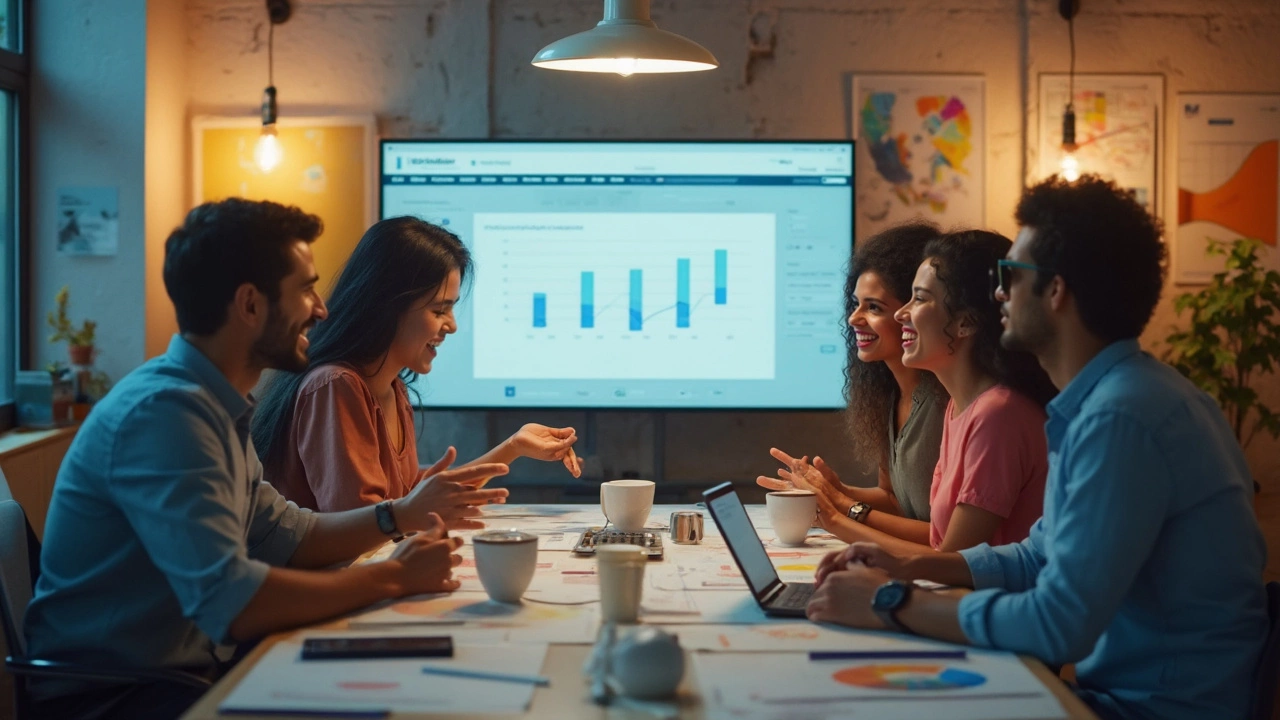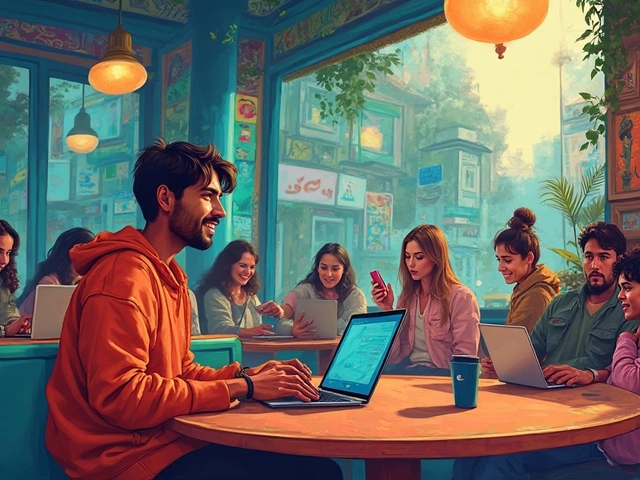If your website feels invisible, you’re not alone. Every minute, hundreds of new sites launch, but only a handful get steady visitors. The internet rewards sites that nail the basics—fast loading, easy navigation, and content that actually helps or entertains people.
Most folks search for stuff, so if your site isn’t showing up in those results, that’s problem number one. But it’s not just about search engines. Design matters too. People click away from slow or confusing pages faster than you think. Even simple tweaks like bigger buttons or clearer headlines can make you stand out in a crowded field.
Don’t sweat if you haven’t mastered all the tech tricks. The good news is that getting more views is about small, practical changes stacked on top of each other. Start with the basics—fix your layout, write what people search for, and share smartly. It’s not magic; it’s just paying attention to what real people actually want when they visit a site. The results can surprise you—stick around, and you’ll see how to turn your site from ghost town to hotspot.
- Why Most Websites Go Unnoticed
- Design Choices That Grab Attention
- SEO: The Secret Sauce (But Not Magic)
- Content People Actually Want to Read
- Using Social Media Without Going Overboard
- Easy Wins Most Sites Miss
Why Most Websites Go Unnoticed
You launch your shiny new site, but hardly anyone visits. That’s not rare—it’s the norm. In fact, a widely shared stat says 91% of all content on the web gets zero traffic from Google. Most websites just aren’t built with visitors or search engines in mind. They end up as digital islands nobody finds or cares about.
Let’s break down the main reasons websites get ignored:
- Poor SEO setup: If Google can’t figure out what your site is about, it won’t show you anywhere near the top—if at all. Key things like page titles, keywords, and descriptions matter more than people realize.
- Slow loading times: Research from Google shows 53% of people leave if a site takes more than three seconds to load on mobile. Slow pages never stand a chance.
- Confusing or outdated design: If visitors can’t figure out what your site does in a few seconds, they’ll bail. Design doesn’t have to win awards, but it must be clear and updated for today’s screens.
- Lack of fresh or valuable content: Sites that sit idle, or offer recycled info, quickly get forgotten by both users and search engines.
- Not optimized for mobile: As of 2024, over 60% of web traffic comes from mobile devices. If your site is clunky on a phone, people are gone before you know it.
These mistakes are super common—and fixable. But you can’t fix what you can’t see, so it helps to look at some hard numbers:
| Reason | Impact |
|---|---|
| No SEO | 91% of sites never get Google traffic |
| Slow loading | 53% leave if 3s+ on mobile |
| Bad mobile design | 60%+ traffic is mobile, most leave if the layout is broken |
| No value | Sites with no new content drop out of rankings fast |
If your site falls into any of these traps, you’re missing out on both search engine spots and real visitors. The first step to getting your get website viewed goal is understanding and fixing these basics.
Design Choices That Grab Attention
Your homepage only has about five seconds to convince someone to stick around, according to a 2024 Nielsen Norman Group study. That’s not a lot of time, so the look and feel of your site matter way more than most people think. If your site looks like it’s from 2010 or is hard to use on a phone, you’re losing traffic before you even get a chance.
First things first: mobile design is non-negotiable. These days, over 62% of web traffic comes from mobile devices. If users have to pinch and zoom or squint to read your site, they bounce. Responsive design isn’t a buzzword; it’s how you show visitors you actually care about their experience.
The color scheme matters more than you’d guess. Bright, contrasting buttons get more clicks—a simple orange or green CTA button can boost engagement by up to 30% compared to muted colors. People are visual, so high-quality images and snappy graphics help too, but don’t go overboard and slow your site down.
Here’s a quick rundown of what actually works:
- Clear navigation: Make menus easy to spot and use. Drop-downs or mega-menus confuse more than they help if you have a small site.
- Big, readable fonts: Anything under 16px is hard to read, especially on phones.
- Obvious call-to-action (CTA) buttons: Don’t make people hunt for your sign-up or buy button.
- White space: Don’t cram everything together. Give your content and images breathing room.
- Consistent branding: Logos, colors, and fonts should look the same across every page
Let’s put a few numbers side by side:
| Design Feature | Positive Impact (%) |
|---|---|
| Mobile-friendly layout | 62%+ of users expect this |
| Fast load time (under 3s) | Up to 40% increase in retention |
| Clear CTA button | 25-30% more engagement |
| Readable font (16px+) | 15% longer time spent per page |
Optimizing for a get website viewed mindset means every element on your site should have a purpose. Ugly or confusing design kills interest—people have options and they move on fast. If you keep things clear, easy, and visually appealing, you’re not just making your site pretty—you’re building trust. And in 2025, trust is what brings visitors back.
SEO: The Secret Sauce (But Not Magic)
SEO gets tossed around a lot, but there’s still loads of confusion about what actually works. The reality? Search engines like Google just want to show people results that answer their questions, load fast, and feel dependable. If you get those simple things right, you’re already ahead of most new sites out there.
The most important thing? Figure out exactly what your audience is searching for. If you run a bike repair shop in Dublin, don’t just write “bike repair”—go for real phrases people punch into Google, like “best bike repair Dublin.” Tools like Google Keyword Planner or Ubersuggest help you spot popular searches and how tough the competition is. Once you find them, sprinkle those phrases naturally into your content—especially your titles, headers, and that first paragraph.
Speed is a big deal now. Google says over half of people bail on a site if it takes more than three seconds to load. Compress your images, skip flashy widgets, and double-check your hosting isn’t dragging things down. Clear navigation helps too—if Google can’t crawl your pages, neither can your visitors.
Don’t forget, what looks good to search engines usually looks good to humans. If your site answers questions and feels organized, you’ll score better with both.
| What Impacts SEO Most? | Why It Matters |
|---|---|
| Quality Content | Search engines rank pages that are actually helpful and specific. |
| Page Speed | Slow sites make people (and Google) lose interest fast. |
| Relevant Keywords | Using the exact terms people search for puts you in the running. |
| Mobile-Friendly Design | Most people search on their phones now, so Google checks mobile versions first. |
| Backlinks | Links from other trusted sites tell Google you’re worth paying attention to. |
Here’s a dead simple checklist to get your get website viewed goal off the ground:
- Use keyword tools to pin down what your audience googles
- Put the main phrase in your page titles and first 100 words
- Keep pages loading under three seconds (run your site through PageSpeed Insights)
- Make everything work on mobile as well as desktop
- Ask customers, partners, or friends with websites to link to yours
It’s not rocket science. It’s paying close attention to what real people (and Google) want. Hit these points, and SEO starts working for you instead of being some frustrating mystery.

Content People Actually Want to Read
Let’s be real: nobody shows up on your website hoping to see walls of boring text. People want answers, quick wins, or a reason to stick around. Ask yourself: if you landed on your homepage, would you want to read what’s there? If the answer is no, it’s time for a change.
Always start simple. Use language your visitors actually use. If they search for "best headphones for working out," don't title your post "Aural Accessories for Exercise Enthusiasts." Sounding smart loses people fast—clear always wins. Tools like Google Search Console or even Reddit suggestions can reveal what words people type in.
Value is king. Share step-by-step guides, quick tips, or break down tricky topics. If your content actually solves a problem, those visitors stick around. 40% of users leave a site within 10 seconds if they don’t see what they want—so get to the point fast.
Don’t skip formatting. Big blocks of text scare off readers. Instead, use:
- Short paragraphs (no longer than three lines)
- Descriptive headers for each chunk of info
- Bullet points and lists for steps or key ideas
- Images, infographics, or real examples—people remember pictures and stories way better than facts alone
Updating content keeps your site alive. Search engines notice when pages are fresh. Even revising an article once every six months can boost how often you show up in search results.
Check out some quick stats on what keeps visitors reading:
| Factor | Impact on Engagement |
|---|---|
| Clear headlines | Visitors are 2x more likely to keep reading |
| Images or videos | Gets 94% more views |
| Step-by-step lists | Improves understanding by up to 70% |
| Updated content | 30% higher chance of ranking well on Google |
One last thing: put yourself in your visitor’s shoes. Would you bookmark this page? Would you share it with a friend? If not, rewrite it. When you create content that answers questions clearly and is actually helpful, you’ll see your get website viewed goals finally start to pay off.
Using Social Media Without Going Overboard
Everyone says "Share your website everywhere!" but spamming your links isn’t the way to get seen. If you post too much, or on the wrong platforms, people will just tune you out. The trick is to share your best stuff where your real audience hangs out, and to do it in a way that feels like you’re adding value, not begging for clicks.
Think about which platforms really fit your content. Instagram is perfect for visual sites—maybe you’re showing off design ideas or products. Twitter (or X, as they’re now calling it) is better for quick updates, links, or fast takes. LinkedIn works for anything business-related. If your audience is mostly on TikTok or Facebook, lean in there. Pick two or three tops, not every site under the sun. That way, you’ll actually keep up instead of burning out fast.
Here’s the thing: it’s about consistency. Big spikes only come if your posts show up often enough to get noticed. According to Sprout Social data from 2024, brands that post at least three times a week on their main channel have the best shot at steady traffic bumps. And posts with real tips or unique opinions—rather than just "visit my website"—get up to 40% more engagement.
Make things easy for yourself. Use scheduling tools like Buffer, Hootsuite, or even built-in Meta tools to save time. This way, you can prep a week’s worth of posts in half an hour. And keep an eye on which posts actually send people to your site. If one style works, double down. If nobody clicks from a channel, don’t waste your energy there.
- Share only the most useful or visually striking content from your site.
- Always include a simple, clear call to action ("Check out the full guide on my site")—but don’t overdo it.
- Use hashtags that people are actually searching for, not just branded ones.
- Stay real in your replies. Responding fast gets you noticed way more than blasting posts.
If you want to see which platforms actually deliver, check your analytics every week. Here’s a quick breakdown of 2024 average referral rates to websites by platform:
| Platform | Average Referral (%) |
|---|---|
| 5.7 | |
| 2.9 | |
| Twitter (X) | 1.2 |
| 4.3 | |
| TikTok | 1.9 |
Remember, to really get website viewed, don’t try to do it all. Focus where you’ll get real visitors, not just empty likes. When you post smarter—not just more—you’ll see way better results and save a ton of energy.
Easy Wins Most Sites Miss
Getting extra traffic isn’t always about pricey ads or fancy coding. Lots of websites trip over simple, quick fixes that actually move the needle. If you do these, you can sometimes see improvement in a week—no joke.
- Missing Contact Info: Not putting a phone number, email, or even a simple contact form up front is a classic blunder. People want to reach you fast, so put your details in the site’s header or footer. Studies show that pages with clear contact info convert up to 50% better.
- Broken Links: Clicking a link only to hit a dead end is super frustrating. Tools like Broken Link Checker make it easy to scan your site and fix these in minutes. Even big companies mess this up and lose traffic.
- Alt Text on Images: This one’s huge for both SEO and accessibility. Adding a quick description to your images helps people using screen readers and signals to Google what your page’s about. Less than 40% of small business sites in 2024 did this right.
- Mobile-Friendly Design: Over 60% of website visits come from phones now. Yet you’d be shocked how many sites still don’t look good on mobile. Google even ranks mobile-friendly sites higher, so use their free test to check your site. Fixing font size and button spacing can keep people from bouncing.
- Up-to-date Content: If your blog hasn’t been updated in a year, people notice—and so do search engines. Monthly updates or even tweaking your most popular page signals you’re still around. That gives your site a quick trust boost.
- Clear Calls to Action: Don’t make visitors guess what you want them to do. Buttons like “Book Now,” “Download Guide,” or “Shop Deals” help guide them and boost clicks.
If you just do these six fixes, you’re already ahead of the pack. Check out this quick data snapshot from sites that made these tweaks last year:
| Change Implemented | Avg. Traffic Boost (%) | Avg. Bounce Rate Drop (%) |
|---|---|---|
| Added Mobile Optimization | 28 | 15 |
| Fixed Broken Links | 17 | 12 |
| Added Alt Text | 13 | 7 |
| Regular Content Updates | 24 | 10 |
The numbers don't lie. These easy wins prove that even small tweaks can help you get website viewed by a lot more people. Don’t overthink it—start with these basics and check the results in a month.



